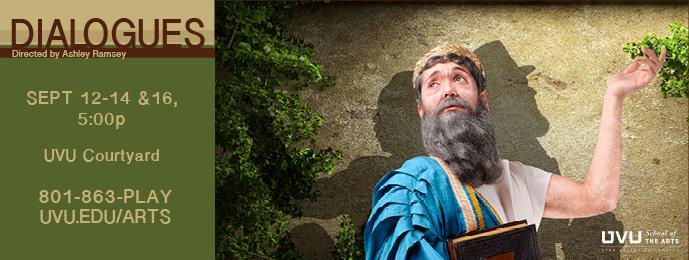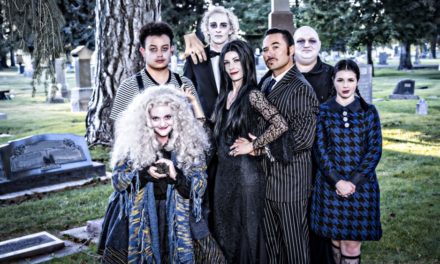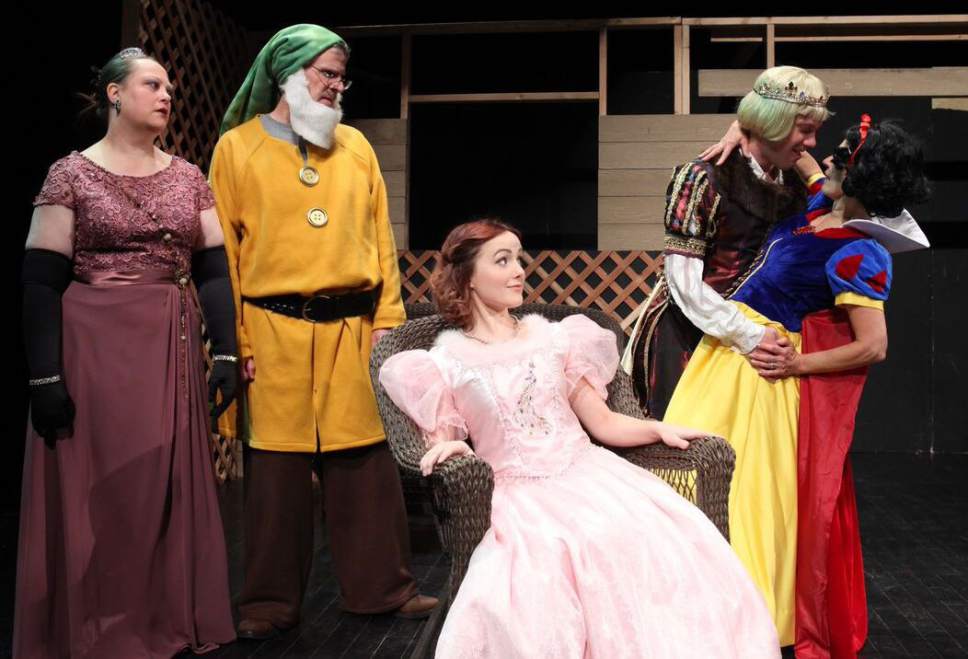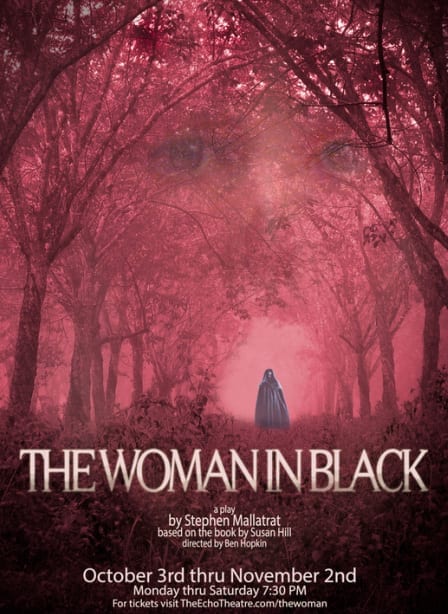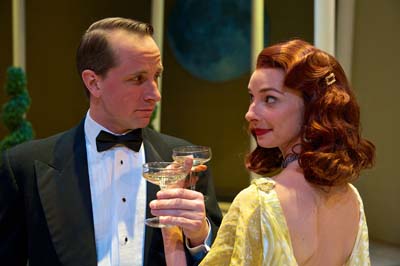OREM — What do Socrates, Anne Frank, Malcolm X, Joan of Arc, Joseph Smith, Roza Robota, and Bobby Sands have in common? Two things: first, they all died untimely deaths as a result of injustice. Second, all of them can be found onstage in Dialogues at Utah Valley University through September 16.
Dialogues, adapted by Ashley Ramsey and Amber Cummings from Plato’s Crito takes place in a museum when a visitor named Crito (Clarissa Lavon Knotts) suddenly finds six statues of famous people have come to life. As the play unfolds the statues mourn their untimely deaths, discuss justice, and question each other’s choices. Interspersed in the discussion are remembrances, a fantasy sequence, and a few music sequences. Dialogues is part of UVU’s freshman reading program, and it has become an annual tradition for a play based on one of the freshman reading books to be performed at the student center courtyard.As a play, Dialogues is rather bewildering. The six historical figures that hold most of the audience’s attention have almost nothing in common. Therefore, hearing them interact with each other is strange. As if listening to Socrates and Joan of Arc talk to each other weren’t odd enough, the play takes an extra weird turn when Anne Frank (Briana Lindsay) tries to sing a “boogie woogie” song or when Malcolm X (Christian Tyler), Joseph Smith (Lucas Stewart), Roza Robota (Kaela Hernandez), and Anne Frank dance to an Irish drinking song.
As if the bizarre action were not enough, the shallow characterization makes Dialogues particularly tough to handle. Ramsey and Cummings rely almost entirely on audience knowledge of the historical figures in order to make them real human beings. But take that away, and the characters are rarely more than the gray statues that they were at the start of the play. Joseph Smith, for example, rarely does more than hold a book and occasionally mention God. The exception to this tendency towards flat characters was Anne Frank, who was given more to do than any other character. Unfortunately, Anne was written to become very unlikeable, which I found off-putting compared to other portrayals of her on stage.
There is also the open question of why these particular people were chosen by Ramsey and Cummings to interact with each other. Roza Robota, for example, could have been replaced by any executed freedom fighter. Joseph Smith could have been replaced by any religious martyr. And Bobby Sands could have instead been replaced by any person who died in a political protest. I feel that if the words said by these characters could be said by almost anyone in their position, then the personalities become superfluous.
Ramsey’s direction has some strengths, especially in the pantomime sequences that had musical underscoring. She was also effective in emphasizing the message of the play. But the transitions were often confusing, and it sometimes wasn’t always clear when an actor was playing their main historical figure or someone else. Finally, for a play called Dialogues, the dialogue was rather boring, mostly because much of it consists of philosophical naval-gazing (probably keeping in harmony with the source material).
Technically, Lawson Bendall‘s set design resembling three interlocking gears was interesting, but didn’t have much to do with the action on stage. The selection of music was strong and was always pleasant. Finally, the costume designs from Carolyn Urban were interesting in their black and gray color scheme (which matched the actors’ gray statue makeup) and communicated time period by clothing style and cut.
Perhaps Dialogues is a nice component of UVU’s freshman reading program. But if you’re not a required by a class assignment to attend or if you’re not familiar with the original Crito dialogue, it’s not worth seeing.

